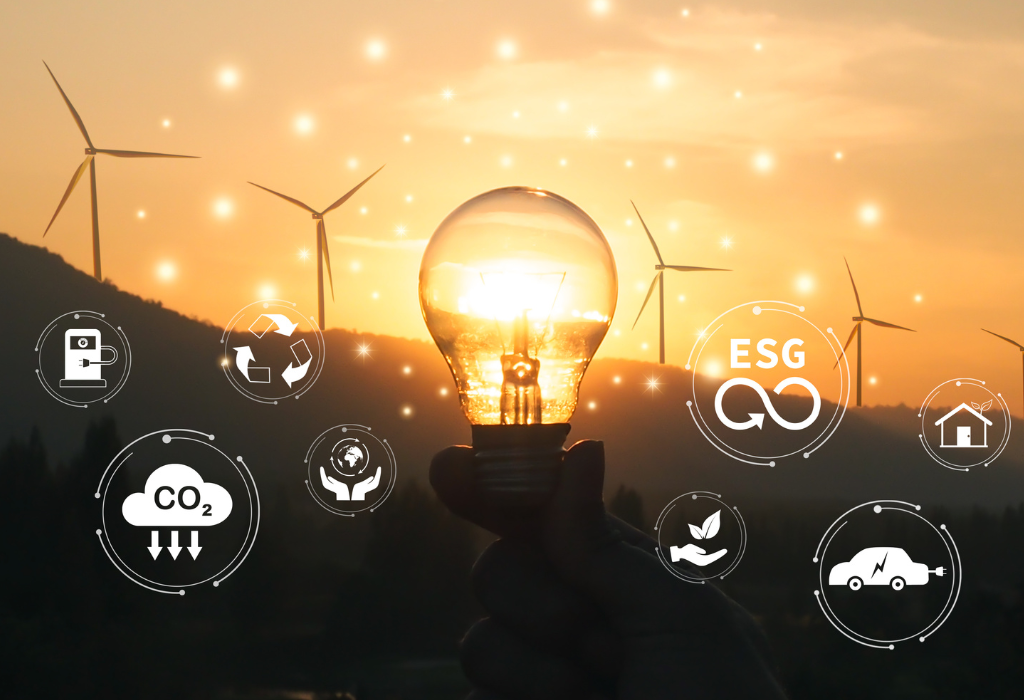Climate change is one of the most crucial challenges of our time. Rising temperatures, extreme weather events, and ecological disruptions have been happening all around the world and are no longer distant possibilities. The past decade has been the warmest on record, and 2024 set a new global high at around 1.48°C above pre-industrial levels with cascading impacts across ecosystems and economies. (World Meteorological Organization+1)
Scientists, who have been issuing warnings for years, are already adamant that without rapid and deep reductions of greenhouse gas emissions, the world could face irreversible damage, from melting ice sheets to collapsing ecosystems, that we can never recover from.
Despite growth in clean energy, the world still meets roughly 80–82% of its total energy needs with coal, oil, and gas, underscoring how much work remains to transition away from high-emitting fuels. (IEAEnergy Institute)
The Intergovernmental Panel on Climate Change (IPCC) makes it clear: human activity, especially the burning of fossil fuels, is the primary driver of global warming. We have many choices in front of us; our behavior in the next decade will determine the planet’s future. (IPCC)
Why This Matters Now
Imagine standing at a crossroads. One path leads to a sustainable future. The other to irreversible damage to our planet. That is where humanity stands today in the fight against climate change.
Scientists have issued warnings for decades. Yet rising global temperatures, extreme weather, and vanishing biodiversity show we are running out of time.
Climate change amplifies extreme heat, wildfire risk, heavy rainfall, and droughts. These hazards jeopardize food and water security, damage infrastructure, and destabilize livelihoods. Health impacts are mounting, too: the WHO projects ~250,000 additional deaths per year between 2030 and 2050 from heat stress, malnutrition, malaria, and diarrheal disease alone—unless we strengthen resilience and cut emissions. (World Health Organization)
Climate also displaces people. In 2023, disasters triggered millions of new internal displacements worldwide, a stark reminder that adaptation and risk reduction are humanitarian imperatives as well as environmental ones. (Berkeley Earth)

The Human Side of Climate Change
Numbers and technologies matter, but climate change is also a human crisis.
- Extreme weather displaces millions every year.
- Food security is under threat as crop yields fall.
- Health risks increase due to heatwaves and air pollution.
- Economies lose billions in damages from floods, droughts, and storms.
These impacts fall hardest on vulnerable communities, often those who contribute least to emissions. Urgent action is just as much about justice and equity as it is.

Global Cooperation is Key
Current global policies still put us on a dangerous path. The UNEP Emissions Gap Report 2024 finds that to keep 1.5°C within reach, global greenhouse gas emissions must fall ~42% by 2030 (vs. 2019) and ~57% by 2035; even for a 2°C limit, cuts of ~28% by 2030 are required. These figures define this decade’s “make-or-break” window. (Digital Library)
Climate change knows no borders, but solving the issues also requires high engagement from governments and countries, facilitating and publicizing things such as:
- Stronger international climate agreements with higher emission-reduction goals.
- Public-private partnerships to accelerate clean energy deployment.
- Knowledge-sharing platforms that spread best practices worldwide.
- Implementation of accessible alternative power options.
A united global effort can close the gap between ambition and action and help tremendously in the fight against global warming.
What Needs to Change
Here’s what urgent action looks like in practice:
- Leave outdated energy systems behind.
Coal plants and oil exploration must be phased out. - Accelerate renewable investment.
Governments and investors should prioritize clean power. - Support innovation.
Incentivize companies developing sustainable, scalable solutions. - Strengthen cooperation.
Ensure fair and global approaches to decarbonization.
The good news? Solutions already exist. What’s missing is the political will and speed to scale them.
Industry’s Role: ONS 2026 as a Case Study
While climate talks often happen in UN summits and grassroots movements, industry gatherings can also play a vital role. ONS 2026, taking place in Norway, will bring together global energy leaders, innovators, and policymakers under the theme “Courage.” This aligns closely with the need for bold climate action, promoting renewable energy adoption, low-carbon technologies, and strategies for a sustainable energy future.
By working toward facilitating collaboration across industries, events like ONS can help turn climate goals into measurable progress.
Innovation is Driving Climate Solutions
Technology plays a crucial role in climate action. Emerging solutions like energy storage systems, smart grids, carbon capture and storage (CCS), and zero-emission fuels can significantly cut emissions. But innovation must be paired with investment and supportive regulation to achieve real impact.
Scalable solutions are within reach, but they require courageous leadership and collaboration between governments, industries, and civil society.
Technology is transforming the way we combat climate change. Here are four innovations making a difference:
- Energy storage – batteries stabilize the renewable energy supply.
- Smart grids – intelligent networks balance electricity demand and supply.
- Carbon capture and storage (CCS) – helps decarbonize hard-to-abate industries.
- Zero-emission fuels – hydrogen and synthetic fuels reduce reliance on oil.
But innovation alone is not enough. These technologies need:
- Supportive government regulation.
- Investment from both public and private sectors.
- Collaboration across industries.
Only then will breakthroughs scale globally.

The Energy Transition: Understanding Our Energy Sources
Fossil fuels and renewable energy are two major sources of power, playing a critical role in today’s world. While both provide energy to domestic, industrial, and transportation sectors, they differ greatly in origin, impact, and sustainability.
The Formation and Rise of Fossil Fuels
Fossil fuels are natural resources that took millions of years to form from the decomposition of ancient plants and animals. Under intense heat and pressure beneath the Earth’s surface, these organic materials transformed into coal, oil, and natural gas.
These fuels are now extracted, refined, and burned to generate electricity, power cars, and support industrial processes. Fossil fuels have been the backbone of global energy supply since the Industrial Revolution, largely because they are energy-dense and relatively easy to transport and store.
The Environmental Cost of Fossil Fuels
Yet, fossil fuel utilization has significant drawbacks. Burning coal, oil, and gas emits enormous amounts of carbon dioxide (CO₂) and other greenhouse gases, which trap heat in the atmosphere and contribute to climate change. In addition, fossil fuel extraction can damage ecosystems, pollute water supplies, and cause air pollution that affects human health.
Because fossil fuels are finite and take millions of years to form, they are considered non-renewable. This means supplies will eventually run out, making it necessary to look for alternatives.
Renewable Energy: Nature’s Continuous Power
Renewable energy, on the other hand, comes from natural resources that are replenished constantly and available on a human timescale. Examples include solar power from the sun, wind energy from moving air, hydropower from flowing water, geothermal energy from the Earth’s heat, and biomass from organic matter.
Unlike fossil fuels, renewable energy does not run out as long as the natural processes continue.
Benefits of Going Renewable
One of the greatest advantages of renewable energy is its minimal environmental impact. Generating electricity from solar panels or wind turbines produces no direct carbon emissions, helping reduce global warming. Renewable sources also decrease dependence on imported fuels and create opportunities for new industries and jobs in green technology.
However, renewables also face challenges, such as intermittency (the sun does not always shine, and the wind does not always blow) and the need for improved energy storage and grid infrastructure.
Fossil fuels remain a dominant but unsustainable energy source, while renewable energy offers a cleaner, long-term solution. As the world faces climate change and limited fossil reserves, the transition toward renewable energy is becoming increasingly important for building a sustainable future.
Currently, energy production is the single biggest contributor to carbon emissions. Today, fossil fuels still provide about 80% of global energy (IEA). This dependence locks us into high emissions.
To solve this, we must accelerate the transition to renewables:
- Solar power – rapidly falling costs make it one of the most scalable solutions.
- Wind energy – onshore and offshore projects can power millions of homes.
- Hydropower – reliable, though dependent on geography and ecosystem balance.
- Green hydrogen – a promising alternative fuel for industry and transport.
This is more than a technical shift. It’s also economic and social. Workers in fossil-fuel industries must be supported with retraining and new job opportunities. A “just transition” ensures no community is left behind.
Find out more about Climate Change from National Geographic and Bill Nye.
So, What is the Way Forward?
The door is narrow but not closed. With evidence-based policies, investment in clean technologies, and scaled adaptation, we can still secure a livable, more equitable future.
Addressing climate change requires a lot of sacrifices and compromises, but many alternative options and solutions are just as effective as the ones we have been using so far, except with less harm to the environment. Things that are currently at the forefront and can greatly benefit the movement include:
- Leaving outdated energy systems behind.
- Innovation to create sustainable, scalable solutions.
- Collaboration to ensure a fair and global approach.
The clock is ticking, but change is possible. By uniting science, technology, policy, and public will, we can create a low-carbon world that ensures prosperity and stability for generations to come.
Frequently Asked Questions
Why is urgent climate action necessary?
Because delaying action increases the risk of crossing tipping points that could cause irreversible damage to ecosystems and societies.
What role do renewables play in solving climate change?
Renewables replace fossil fuels, cutting emissions while providing affordable and sustainable energy.
Can individual actions make a difference?
Yes. While systemic change is crucial, personal choices like reducing energy use, supporting sustainable brands, and voting for climate policies amplify impact.
What is the Paris Agreement’s goal?
To limit global warming to well below 2°C, ideally 1.5°C, compared to pre-industrial levels.
References
- IPCC AR6 Synthesis Report (2023): human-caused warming and the need for rapid, deep and sustained cuts. IPCC
- WMO – State of the Global Climate 2024 (and 2023): record warmth and intensifying climate indicators. World Meteorological Organization+1
- UNEP – Emissions Gap Report 2024: required 2030/2035 global emissions reductions to meet Paris goals. Digital Library
- IEA – World Energy Outlook (2023/2024): fossil fuels’ multi-decade ~80% share and the shift underway. IEA
- Energy Institute – Statistical Review 2024: fossil fuels ≈82% of global primary energy in 2023. Energy Institute
- WHO – Climate change and health: projected 250,000 additional deaths per year (2030–2050). World Health Organization
- IDMC – Global Report on Internal Displacement 2024: disaster-driven internal displacements. Berkeley Earth
- IRENA – Renewable Power Generation Costs 2023: renewables’ cost competitiveness. Copernicus Climate Change Service
- ONS 2026 (ONS Foundation): “Courage.” Copernicus Climate Change Service





